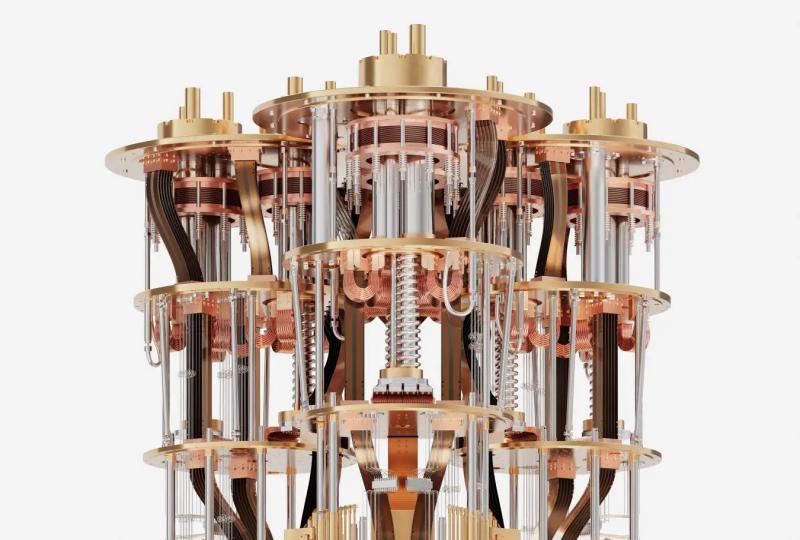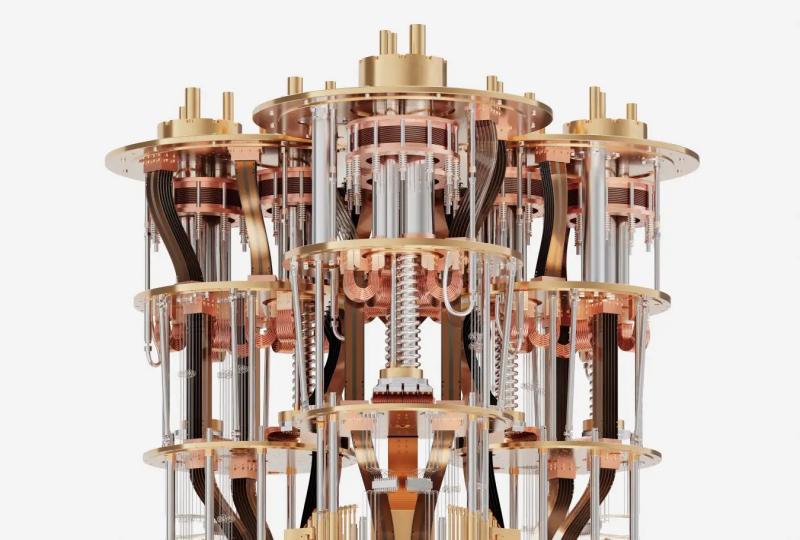Superconducting Qubits: The Backbone of Modern Quantum Computing
2025.07.21 · Blog Superconducting QubitsQuantum computing
Superconducting qubits are one of the leading technologies driving the development of quantum computers. These qubits are based on the principles of superconductivity, a phenomenon where materials lose all electrical resistance when cooled to extremely low temperatures. Superconducting qubits leverage the unique quantum properties of superconducting circuits to represent quantum states, enabling powerful computations that classical computers cannot perform. This article will explore the basics of superconducting qubits, how they work, their advantages and challenges, and their role in the quantum computing revolution.
What Are Superconducting Qubits?
A superconducting qubit is a quantum bit that is implemented using superconducting circuits. Superconductivity occurs when certain materials, such as niobium or aluminum, are cooled below a critical temperature and exhibit zero electrical resistance. In a superconducting qubit, quantum states are encoded in the motion of electric charge within a tiny superconducting circuit. These circuits use the principles of quantum mechanics to exist in both 0 and 1 states simultaneously (superposition) and can be entangled with other qubits, making them ideal for quantum computations.
The two main types of superconducting qubits are:
-
Transmon Qubits: These are the most commonly used superconducting qubits today, as they are relatively resistant to charge noise, which improves their coherence time.
-
Flux Qubits: These qubits encode quantum information in the magnetic flux circulating through a superconducting loop, but they are more sensitive to external magnetic fields.
How Do Superconducting Qubits Work?
Superconducting qubits operate using quantum circuits, which are circuits made up of superconducting components such as Josephson junctions. The Josephson junction is the critical element in superconducting qubits — it is a thin insulating barrier between two superconducting materials that allows for the tunneling of Cooper pairs (pairs of electrons that behave as bosons).
The quantum behavior of superconducting qubits arises from the interaction between the qubit and the Josephson junction, which allows it to exhibit quantum phenomena such as:
-
Superposition: A superconducting qubit can exist in a linear combination of both 0 and 1 states simultaneously.
-
Quantum Tunneling: The qubit can transition between different energy states without needing to move through intermediate states, a key aspect of quantum mechanics.
-
Entanglement: Superconducting qubits can be entangled with each other, which is crucial for parallel processing and exponential speedup in quantum computations.
Key Components of Superconducting Qubits
-
Josephson Junction:
-
The Josephson junction is the heart of the superconducting qubit. It behaves as a nonlinear inductor and is responsible for enabling quantum tunneling between two superconducting states. The junction is crucial for creating the two energy levels that represent the qubit’s 0 and 1 states.
-
-
Microwave Control:
-
Superconducting qubits are typically controlled by applying microwave pulses. These microwave signals are used to manipulate the qubit’s state, performing quantum gates (like Hadamard, CNOT, or Pauli-X gates) and enabling operations like superposition and entanglement.
-
-
Readout Mechanism:
-
Measurement of the qubit's state is done through a readout mechanism, often using a resonator that interacts with the qubit. The qubit's state is measured by detecting the change in the resonator’s properties, such as its frequency, which provides information about whether the qubit is in state 0 or 1.
-
-
Cryogenic Environment:
-
Superconducting qubits must be operated at extremely low temperatures (close to absolute zero) to maintain their superconducting properties. Specialized cryogenic equipment, such as dilution refrigerators, is used to cool the quantum circuits and prevent thermal noise from disrupting the delicate quantum states.
-
Advantages of Superconducting Qubits
-
Scalability:
-
Superconducting qubits can be scaled up to many qubits, which is essential for practical quantum computation. Leading quantum computing companies like IBM, Google, and Rigetti have already demonstrated quantum processors with hundreds of superconducting qubits.
-
-
Relatively High Coherence Time:
-
Superconducting qubits, particularly transmons, are known for having relatively long coherence times compared to other qubit types like trapped ions. This is largely due to their resistance to charge noise, which makes them more stable for performing quantum computations.
-
-
Mature Technology:
-
Superconducting qubits benefit from decades of research in superconductivity and nanofabrication techniques. This has made the technology relatively mature and accessible, leading to advances in quantum hardware and software.
-
-
Quantum Gate Fidelity:
-
Superconducting qubits have achieved high gate fidelity, meaning that the operations performed on them are very accurate. This is critical for executing complex quantum algorithms, where even small errors can drastically affect the results.
-
Challenges of Superconducting Qubits
-
Decoherence:
-
Despite their relatively long coherence times, superconducting qubits are still susceptible to decoherence. Interaction with the environment, such as thermal noise or electromagnetic interference, can cause qubits to lose their quantum properties and collapse to classical states. Quantum error correction techniques are essential to combat decoherence.
-
-
Cryogenic Requirements:
-
Operating superconducting qubits requires very low temperatures (typically below 20 millikelvin), which adds complexity and cost to the quantum computing system. The need for dilution refrigerators and other cryogenic equipment limits the accessibility and scalability of superconducting qubit systems.
-
-
Noise Sensitivity:
-
While superconducting qubits are relatively resistant to charge noise, they are still susceptible to other types of noise, such as flux noise and thermal fluctuations. These types of noise can lead to errors in the computation and reduce the reliability of quantum operations.
-
-
Crosstalk Between Qubits:
-
As the number of superconducting qubits increases, crosstalk — unwanted interactions between qubits — becomes a significant issue. Managing these interactions is critical for maintaining the integrity of quantum operations in large-scale quantum systems.
-
Applications of Superconducting Qubits
Superconducting qubits have opened up numerous possibilities for quantum computing and its applications:
-
Quantum Simulation:
-
Superconducting qubits are ideal for simulating complex quantum systems, such as molecules and materials, that are intractable for classical computers. This has potential applications in fields like drug discovery, materials science, and chemistry.
-
-
Quantum Cryptography:
-
Quantum computing, including systems based on superconducting qubits, has the potential to break traditional cryptographic protocols like RSA encryption. However, it also enables the development of new quantum-safe encryption methods, which rely on the principles of quantum mechanics.
-
-
Optimization Problems:
-
Superconducting qubits can be used to solve complex optimization problems, such as the traveling salesman problem or logistics optimization, that are beyond the reach of classical computers. This could revolutionize industries like finance, transportation, and manufacturing.
-
-
Machine Learning:
-
Quantum machine learning algorithms can benefit from the power of superconducting qubits, allowing for faster training of models and the handling of large datasets with quantum speedup. This has potential applications in AI, pattern recognition, and data analysis.
-
The Future of Superconducting Qubits
The future of superconducting qubits looks promising, with companies and research institutions actively working to overcome the remaining challenges. Efforts are focused on improving the coherence time, reducing noise, and scaling up the number of qubits for more powerful quantum computers. The development of quantum error correction techniques and quantum software tools will be crucial for unlocking the full potential of superconducting qubits and quantum computing as a whole.
Conclusion
Superconducting qubits are at the forefront of quantum computing research, offering the potential to revolutionize industries by solving problems that are currently intractable for classical computers. While challenges such as decoherence, noise sensitivity, and cryogenic requirements remain, advances in quantum hardware and software are steadily overcoming these obstacles. As quantum technology continues to mature, superconducting qubits will play a key role in realizing the dream of large-scale, fault-tolerant quantum computers.
Featured Content






